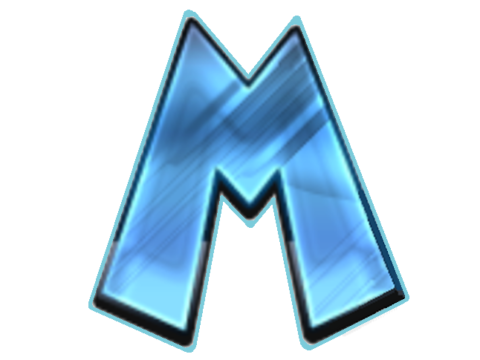
Polkadot (DOT) represents a significant leap forward in blockchain technology, aiming to solve key challenges related to scalability, interoperability, and security. At the heart of Polkadot’s innovation are its parachain and Relay Chain architectures. Understanding these components is crucial for grasping how Polkadot functions and its potential to transform the blockchain landscape. This article provides an in-depth look at Polkadot’s parachain and Relay Chain architecture, explaining their roles and how they contribute to the network’s overall efficiency and effectiveness.
What is Polkadot?
Polkadot is a multi-chain blockchain network designed to enable various blockchains to interoperate and work together seamlessly. Founded by Dr. Gavin Wood, one of Ethereum’s co-founders, Polkadot introduces a novel approach to blockchain connectivity and scalability through its unique architecture. The network consists of two main components: the Relay Chain and parachains.
Relay Chain: The Heart of Polkadot
The Relay Chain is the core component of the Polkadot network, serving as the central hub that connects and secures all parachains. It is responsible for coordinating the network’s consensus, security, and cross-chain communication. Here’s a closer look at its functions:
1. Consensus and Security
- Shared Security Model: The Relay Chain provides a shared security model that all connected parachains benefit from. This means that the security of each parachain is derived from the overall security of the Relay Chain, reducing the risk of attacks and vulnerabilities.
- Validator Network: Validators on the Relay Chain are responsible for maintaining network consensus and validating transactions. They play a crucial role in ensuring the integrity and security of the entire Polkadot network.
2. Cross-Chain Communication
- Interoperability: The Relay Chain facilitates communication between parachains and external blockchains. This cross-chain communication enables the transfer of assets and data across different networks, enhancing the overall functionality of the Polkadot ecosystem.
- Message Passing: The Relay Chain supports message passing between parachains, allowing them to interact and exchange information seamlessly.
3. Governance and Upgrades
- On-Chain Governance: Polkadot employs an on-chain governance model that allows DOT holders to participate in decision-making processes. The Relay Chain is central to this governance system, enabling proposals, voting, and protocol upgrades.
- Adaptive Evolution: The governance model ensures that the network can adapt to emerging trends and challenges, allowing for continuous improvement and innovation.
Parachains: Specialized Blockchains
Parachains are individual blockchains that connect to the Relay Chain, each designed to serve specific purposes or use cases. They are a key feature of Polkadot’s architecture, offering several benefits:
1. Scalability
- Parallel Processing: Parachains operate in parallel, allowing for simultaneous transaction processing across multiple chains. This parallelism enhances the overall scalability of the Polkadot network, enabling it to handle a high volume of transactions.
- Customizable Chains: Developers can create custom parachains tailored to specific applications or industries. This flexibility allows for the development of specialized blockchains optimized for various use cases.
2. Interoperability
- Cross-Chain Integration: Parachains can interact with one another through the Relay Chain, enabling seamless integration and communication between different blockchains. This interoperability is essential for building a connected and functional ecosystem.
- Shared Resources: Parachains can leverage resources and data from other parachains, facilitating more complex and integrated applications.
3. Independent Operation
- Autonomous Functionality: Each parachain operates independently, with its own set of validators and governance mechanisms. This autonomy allows parachains to focus on their specific functions while still benefiting from the overall security and connectivity provided by the Relay Chain.
- Custom Consensus Mechanisms: Parachains can implement their own consensus mechanisms, tailored to their unique requirements. This customization enhances the efficiency and effectiveness of each parachain.
How Parachains and Relay Chain Work Together
The interaction between parachains and the Relay Chain is fundamental to Polkadot’s architecture. Here’s how they work together:
1. Transaction Processing
- Parachain Transactions: Transactions are processed on individual parachains, leveraging their specific consensus mechanisms and processing capabilities.
- Relay Chain Validation: Once transactions are processed, they are validated by the Relay Chain. Validators on the Relay Chain ensure that the transactions are accurate and secure before finalizing them.
2. Cross-Chain Communication
- Message Passing: Parachains use the Relay Chain to send messages and data to other parachains. This message passing facilitates cross-chain interactions and data sharing.
- Asset Transfers: The Relay Chain enables the transfer of assets between parachains and external blockchains, supporting a diverse range of use cases and applications.
3. Governance and Upgrades
- Proposal Submission: Parachains can submit proposals for network upgrades or changes through the Relay Chain’s governance system.
- Voting and Implementation: DOT holders vote on proposals, and approved changes are implemented across the network, affecting both the Relay Chain and connected parachains.
Conclusion
Polkadot’s parachain and Relay Chain architecture represent a groundbreaking approach to blockchain technology, addressing key challenges related to scalability, interoperability, and security. The Relay Chain serves as the central hub that coordinates and secures the network, while parachains offer specialized and scalable solutions for various applications.
By understanding the roles and functions of the Relay Chain and parachains, stakeholders can better appreciate how Polkadot is shaping the future of blockchain technology. As the network continues to evolve, its innovative architecture will play a crucial role in driving advancements and fostering a more connected and efficient blockchain ecosystem.









